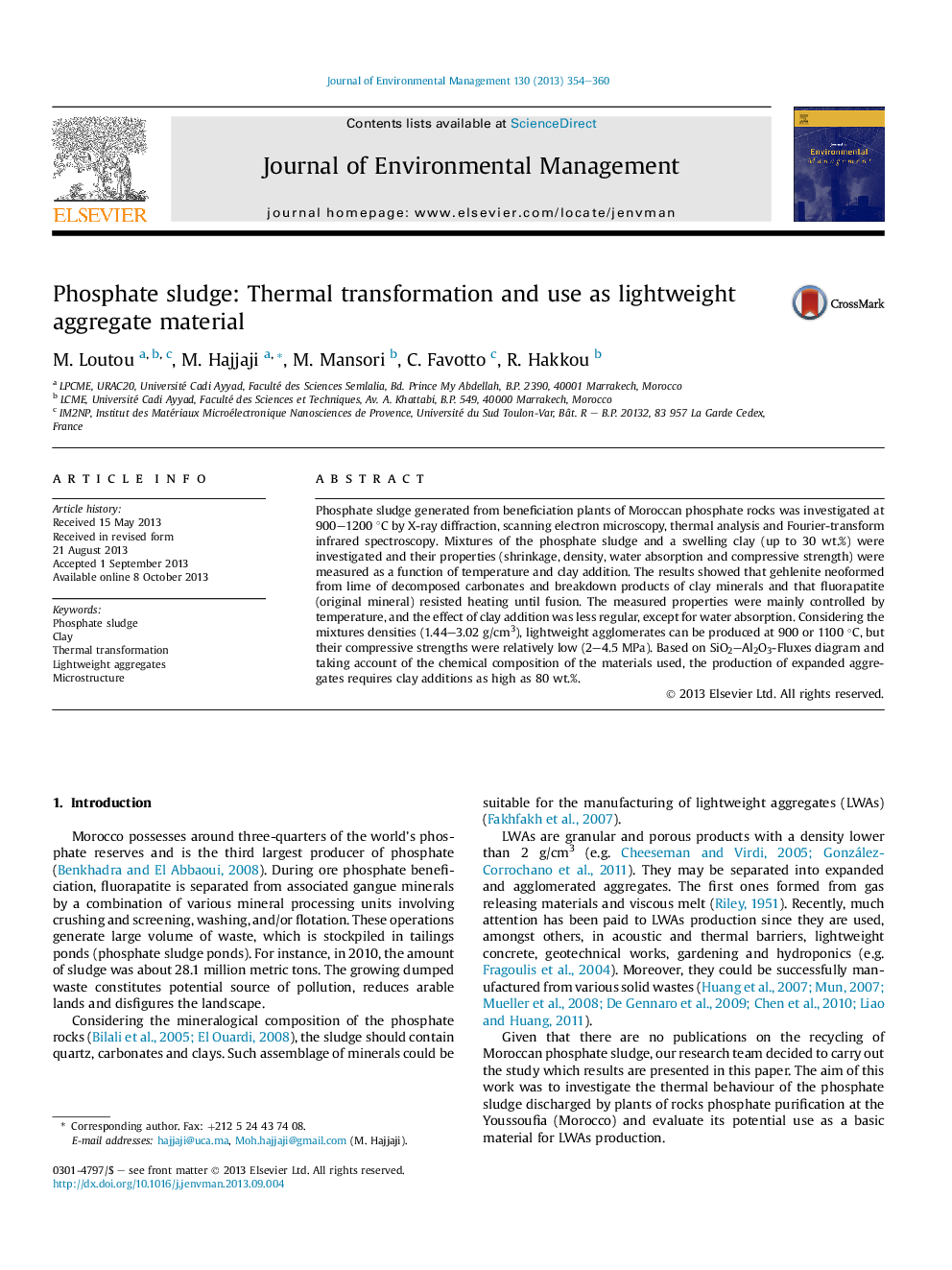| کد مقاله | کد نشریه | سال انتشار | مقاله انگلیسی | نسخه تمام متن |
|---|---|---|---|---|
| 1056104 | 1485282 | 2013 | 7 صفحه PDF | دانلود رایگان |

• Gehlenite formed in heated clay-amended phosphate sludge pellets.
• Temperature as compared to clay content had a marked effect on pellets physical properties.
• LWAs were produced at 900 and 1100 °C and may be used in gardening and hydroponics.
• Expanded LWAs formation was discussed in light of SiO2–Al2O3-Fluxes diagram.
Phosphate sludge generated from beneficiation plants of Moroccan phosphate rocks was investigated at 900–1200 °C by X-ray diffraction, scanning electron microscopy, thermal analysis and Fourier-transform infrared spectroscopy. Mixtures of the phosphate sludge and a swelling clay (up to 30 wt.%) were investigated and their properties (shrinkage, density, water absorption and compressive strength) were measured as a function of temperature and clay addition. The results showed that gehlenite neoformed from lime of decomposed carbonates and breakdown products of clay minerals and that fluorapatite (original mineral) resisted heating until fusion. The measured properties were mainly controlled by temperature, and the effect of clay addition was less regular, except for water absorption. Considering the mixtures densities (1.44–3.02 g/cm3), lightweight agglomerates can be produced at 900 or 1100 °C, but their compressive strengths were relatively low (2–4.5 MPa). Based on SiO2–Al2O3-Fluxes diagram and taking account of the chemical composition of the materials used, the production of expanded aggregates requires clay additions as high as 80 wt.%.
Journal: Journal of Environmental Management - Volume 130, 30 November 2013, Pages 354–360